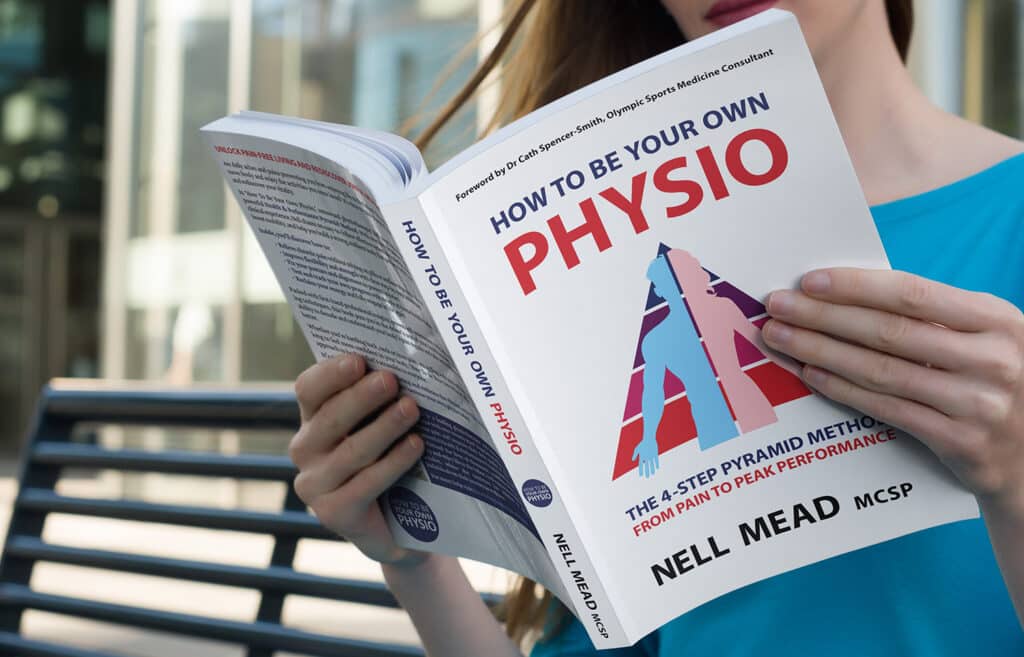Shoulder Pain Case studies
Over the past 20 years as a physiotherapist, I've helped thousands of people recover from a wide variety of shoulder pain issues.
Philip was referred to me by one of my favourite shoulder surgeons. Eight weeks earlier, Philip had fallen over while playing football in the garden with his granddaughter, and had hurt his right shoulder. He had been referred to his surgeon, who had quickly diagnosed a torn rotator cuff and ruptured biceps, and had carried out an open repair. It was now my job to help Philip get back to full fitness!
When I first examined Philip, I noticed that his right shoulder was sitting too far forwards in its socket, that his pelvis was rotated to the right, and that his right foot was twisted. However, when I repositioned his right foot, his pelvis untwisted, and his shoulder relaxed back into a neutral position.
The first job therefore was to sort out Philip’s right foot. I mobilised his foot bones and gave him exercises to practice; but as a temporary solution, I also gave him insoles which supported his feet into a better position.
This done, I was able to focus on the tension and range of movement around Philip’s shoulder, which was unsurprisingly quite weak and stiff after six weeks in a sling! This meant getting his ribcage, shoulderblade, collarbone, neck and shoulder working normally, as they’d all stiffened up; and restoring muscle balance. However, Philip worked hard at his exercises, and I was able to discharge him less than six months later, with only a slight loss of internal rotation, meaning he couldn’t reach his right hand up his back quite as far as his left one – a pretty good outcome for someone who’d undergone such major surgery!
Some years ago, while on holiday, I was lucky enough to meet a delightful lady called Jill. Jill had recently had some bad news – she’d been diagnosed with stage 1 breast cancer and was waiting for surgery. We got chatting, and eventually she asked if I might be able to help her with her post-operative physiotherapy. This is her story.
Meet Jill, a delightful 63 year old journalist, recreational tennis player and volunteer at Battersea Dogs’ Home who was diagnosed with stage 1 breast cancer in 2014.
By the start of 2015, she had had a lump removed from her breast, and 14 lymph nodes (the average human has around 20) removed from her armpit, plus a course of radiotherapy.
When Jill came to see me in early 2015, her biggest issues were tension in her neck, shoulders and ribcage (a combination of cancer- and work-related stress, posture, tennis technique and surgery), a stiff shoulder (common after breast and armpit surgery) and a seroma (a buildup of fluid around the operation site, also common with breast cancer surgery).
I was also concerned about the risk of developing painful scar tissue and cording around Jill’s breast and armpit, found in up to 72% of women after lymph node clearance. Avoiding scarring, cording and stiffness takes some luck and a lot of dedication; and Jill certainly had the dedication. She practised her shoulder flexibility exercises every day and kept up her routine of eating well and water walking… and after a lot of encouragement and teaching from me, gradually built up the nerve to touch, and gently massage her breast.
For my part, I was doing lymphatic drainage massage, and gently mobilising the scar over her ribcage and breast, to minimise the risk of stickiness between the layers of tissue. This tissue is largely made of fascia or connective tissue, which responds well to very gentle touch but flares up with heavy-handed treatment.
I also gave Jill a few sessions of craniosacral therapy, which is thought to help the nervous system calm down – invaluable for people whose minds are racing and nervous systems highly strung after the shock of a cancer diagnosis and then radical treatment.
Within just a couple of months, Jill’s breast tissue – which had felt quite rubbery to the touch after radiotherapy (after all, it had just been microwaved) started to feel much more mobile and vital. Her seroma gradually settled, and the flexibility returned to her shoulder.
When her surgeon reviewed her, he was amazed at her progress – not only do most women struggle to ever get normal flexibility back after cancer surgery, but he felt the lack of scarring and tethering in her breast and ribcage was extremely unusual.
Jill has continued to work hard on her posture, flexibility and strength; and while she still pops in for treatment every now and then, she’s back on the tennis court, working and living a full life. And she’s absolutely convinced that quality physiotherapy had a major role to play, both physically and in terms of her confidence.
Quick Links
Address
Longcroft House
2-8 Victoria Ave
London
EC2M 4NS
Are you tired of quick fixes that leave you back at square one? Ready to take control of your health with evidence-based strategies?
My book isn’t just another health tome – it’s your ticket to understanding your body and conquering both niggles and long-standing symptoms.
